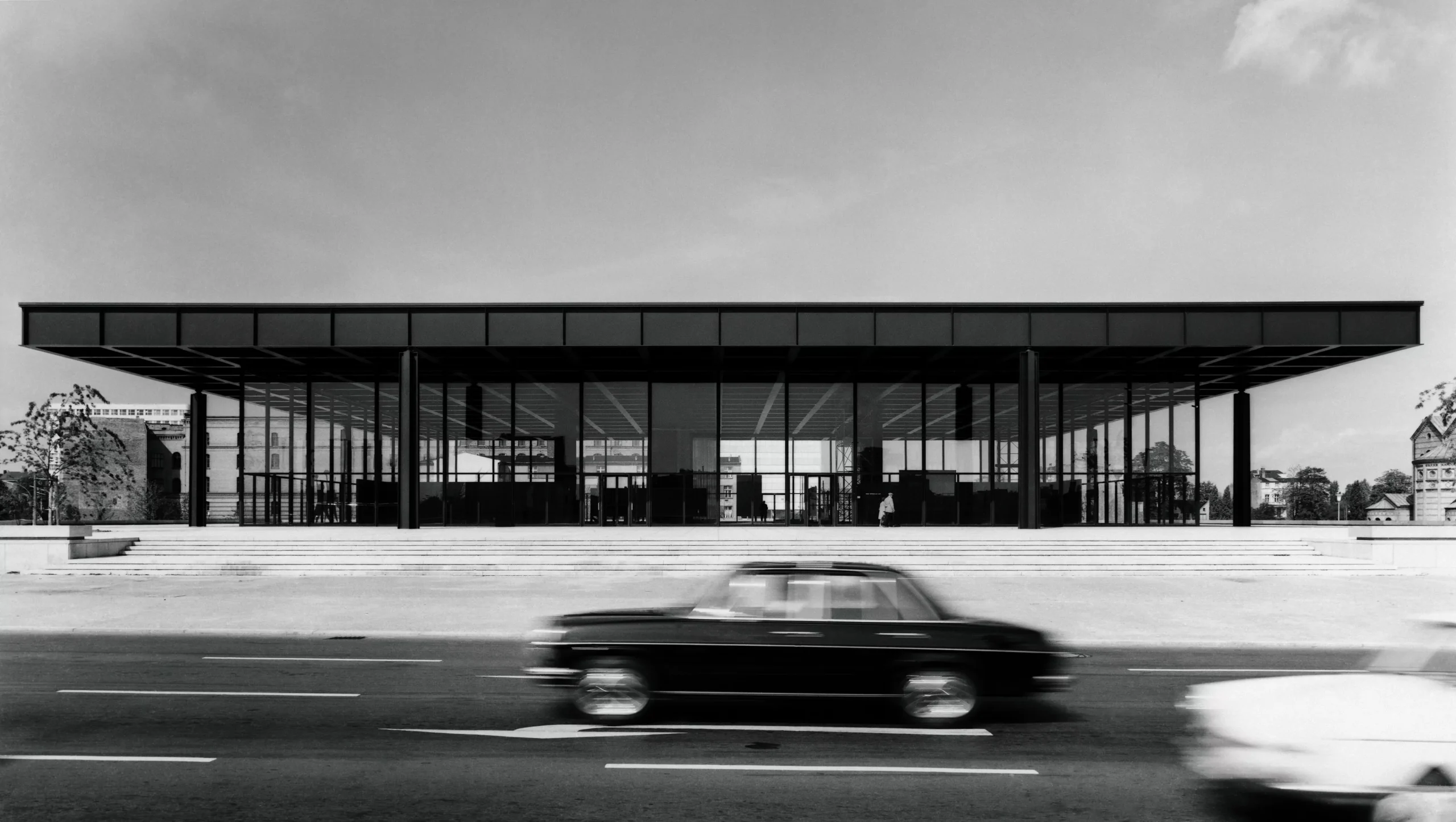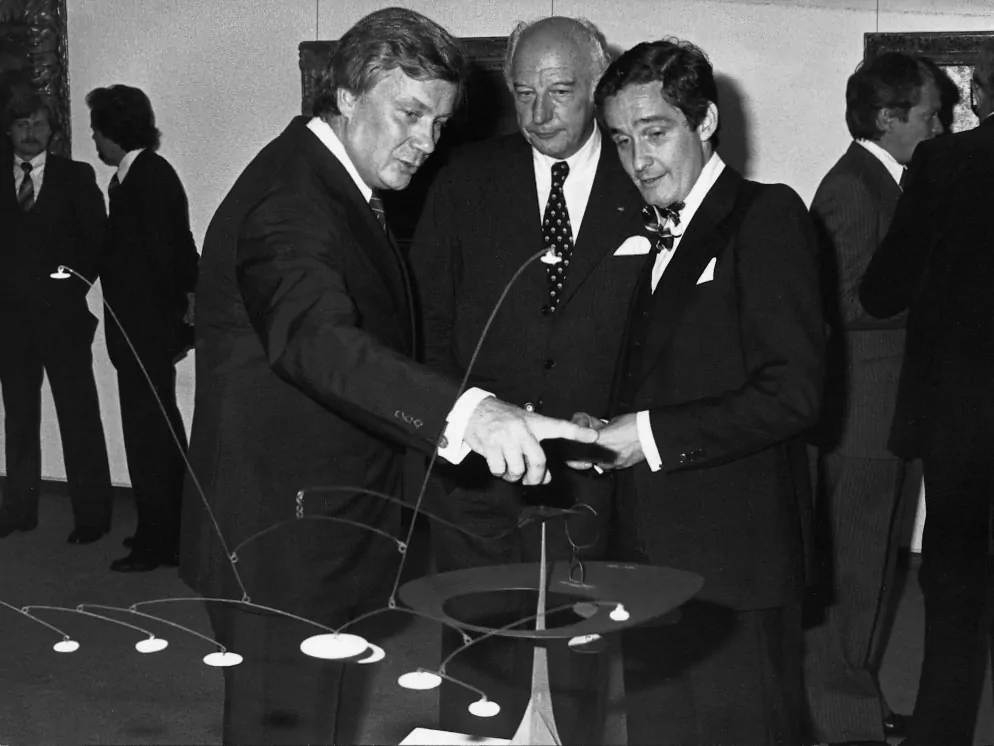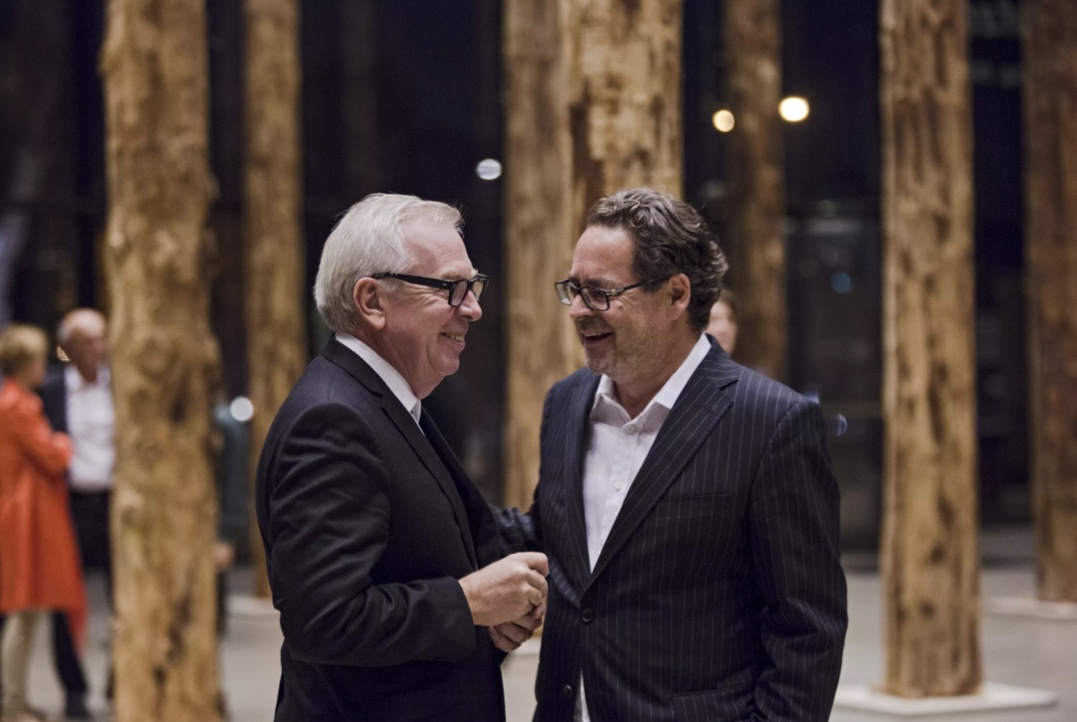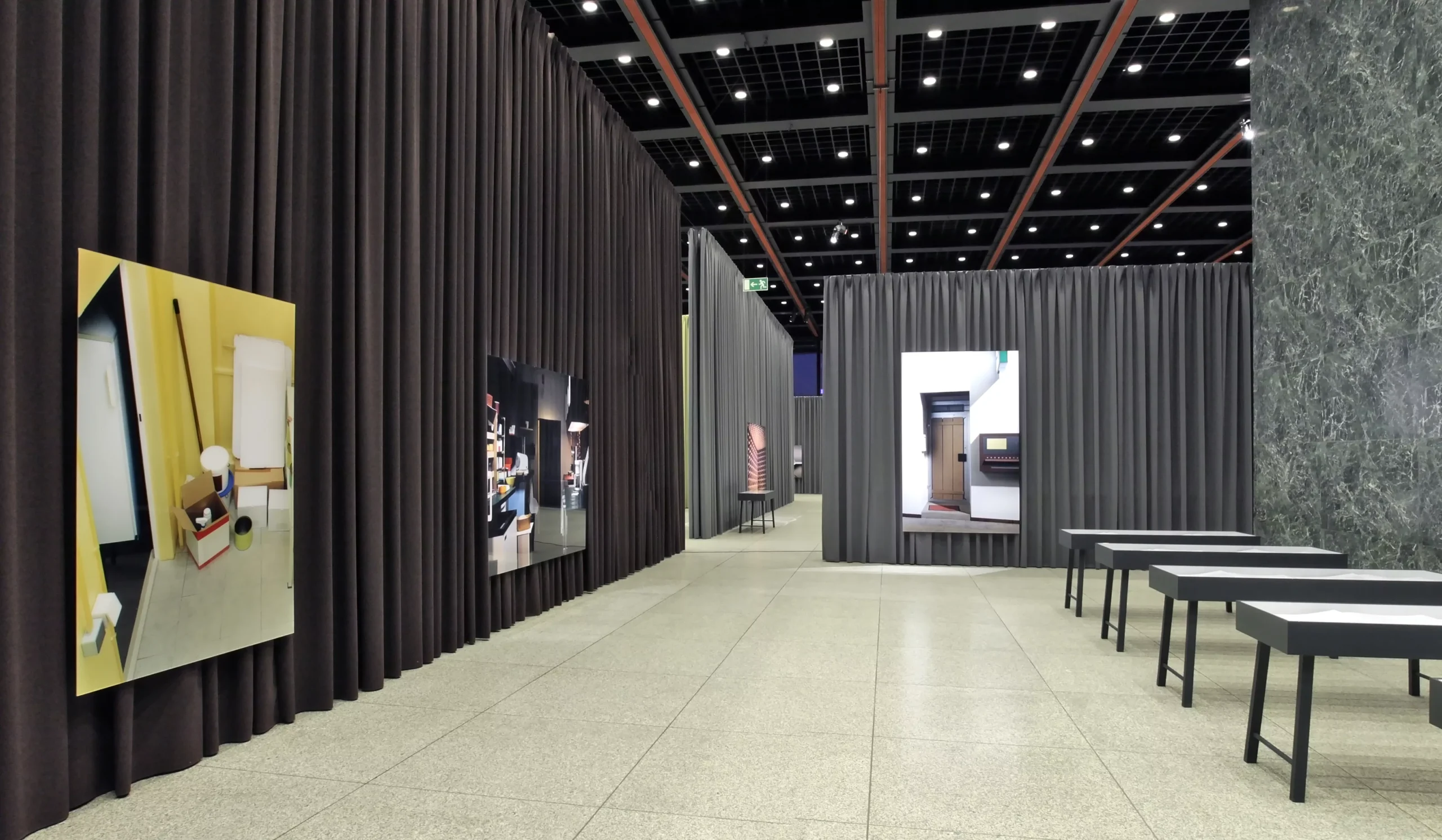New National Gallery, view of Potsdamer Strasse, 1968 | Photo: Reinhard Friedrich/Archive New National Gallery, National Gallery, State Museums in Berlin
The National Gallery
and the Friends

Berlin, as a divided city with a prolonged post-war period until 1989, was the ultimate place of loss. No longer a capital, no longer an industrial metropolis, without a surrounding area, completely disturbed in its Prussian traditions, without an educated middle class, also because it had lost its Jewish citizens, divided Berlin was a double place of loss.
In contrast, only the arts and academic institutions had an effect on both sides. In both the West and the East, it was the orchestras, theaters and museums, the libraries and universities that gave this twin city a new, old attractiveness and a new life.
Ludwig Mies van der Rohe's temple of the New National Gallery, inaugurated in 1968, the year of the student revolution, was the first clear signal of a regained international reputation through the modern arts, at least in one half of the city.

Handover of Calder's “Dancing Stars” by Peter Raue to Dieter Honisch in the presence of Walter Scheel, 1978
Werner Haftmann, the first director with a broad intellectual background, remained an aristocratic loner in Berlin. In contrast, from 1975 onwards, Dieter Honisch was more radical and more pragmatic as the second man in the temple of modernity. Acting completely unexpectedly and unflinchingly, he was a masterful strategist of overpowering well-intentioned people through art.
But it was only the Honisch-Raue duo that succeeded in making art in Berlin a public matter again.
Precisely through the Association of Friends of the National Gallery, which was re-founded by Honisch 33 years ago and chaired by Peter Raue until 2008. At the latest with the reopening of the Alte Nationalgalerie on Museum Island in 2001, the association's purpose, the promotion of the Nationalgalerie, became apparent again for the first time as a task that went beyond the revitalization of West Berlin and was binding on the entire cultural nation.
Jörg Immendorff at the opening of his retrospective, together with Gerhard Schröder, former Chancellor. D., and Peter-Klaus Schuster
Under the aegis of Peter-Klaus Schuster, third director of the Nationalgalerie and at the same time general director of the National Museums in Berlin, the Nationalgalerie attracts with a long list of top-class special exhibitions from Goya, Gaugin and Picasso to Immendorff, from “Cloud Pictures – The Discovery of Heaven” to “ “Melancholy Genius and Madness in Art” attracted numerous visitors from home and abroad.
Many of these projects are only possible thanks to the financial and organizational support of the “Friends”. The groundbreaking exhibition successes of “The MoMA in Berlin” and “The Most Beautiful French Come from New York” not only inspired a total of almost 2 million visitors – some for the first time – about the origins and highlights of classical modernism, but also set a benchmark for contemporary ones Exhibition organization set.

David Chipperfield and Udo Kittelmann during the opening of “David Chipperfield – Sticks and Stones” in the Neue Nationalgalerie | Photo: David von Becker
With Udo Kittelmann as fourth director (2008-2020), the focus is on connecting the six houses into a synergistic whole that spans three centuries.
Exhibition projects such as “Art is great!” at the Hamburger Bahnhof (2009), “Louise Bourgeois / Hans Bellmer: Double sexus” in the Scharf-Gerstenberg Collection (2010), “Thomas Demand. Nationalgalerie” in the Neue Nationalgalerie (2009), Hilma Af Klint (2013) and “Wall works” (2013-14), both in the Hamburger Bahnhof, show how the brilliant holdings of the Nationalgalerie collection connect art history with today , how a closer thinking of the houses together opens up completely new areas of association without much effort.
Projects with an experimental attitude such as “SOMA” by Carsten Höller (2010), “Cloud Cities” by Tomás Saraceno (2011) or the “Sky Art Event” by Otto Piene (2014) would not be possible without the friends’ organizational support and entrepreneurial flexibility conceivable.

Exhibition “Thomas Demand.
Nationalgalerie“ in the Neue Nationalgalerie Photo: David von Becker / © VG Bild-Kunst, Bonn 2019
Supporting this large national gallery in the new old capital of the Federal Republic of Germany and maintaining it as a living institution, which includes the Old and New National Gallery, the Hamburg Train Station, the Friedrichswerder Church, the Berggruen Museum and the Scharf-Gerstenberg Collection, is now one of the highest international goals important task of the Friends of the National Gallery.